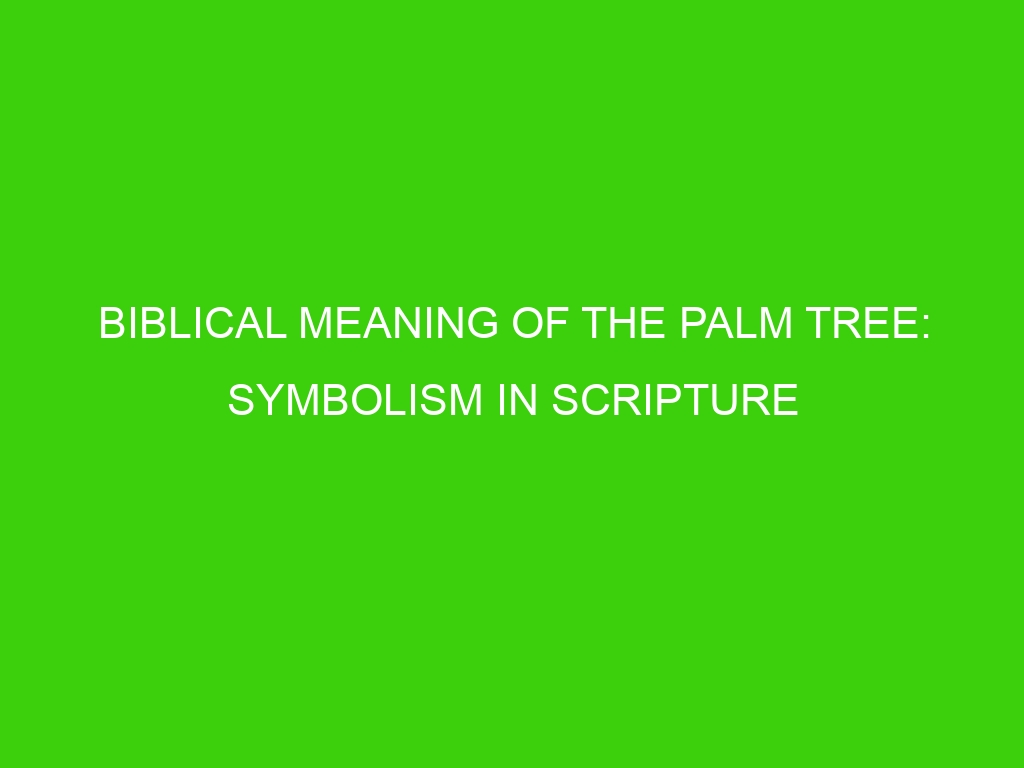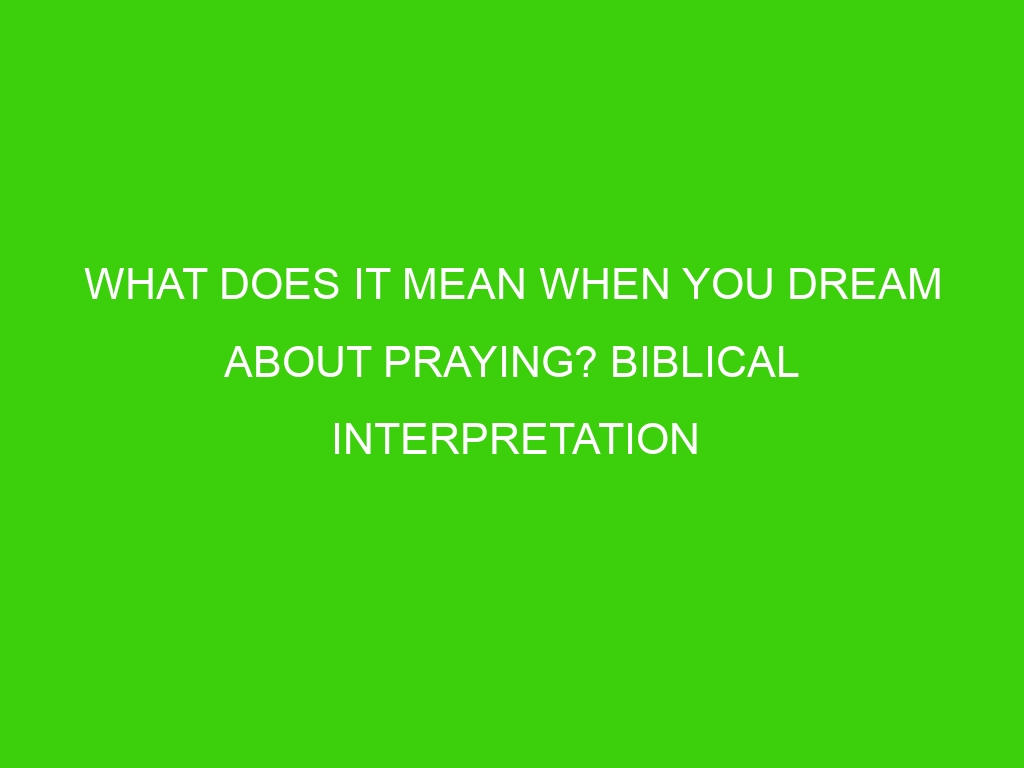You’re strolling along the beach when your bare feet hit the sand under a palm tree.
Looking up at its fan-shaped leaves, you wonder about the significance of this majestic tree.
Does it hold meaning beyond providing shade from the hot sun? Palm trees pop up in both the Old and New Testaments, where they take on rich symbolism.
In scripture, the palm represents peace, triumph, righteousness, and eternal life in heaven.
As you read this article, you’ll uncover the deeper spiritual significance behind the palm tree in the Bible.
Understanding the biblical meaning of the palm sheds new light on familiar passages and adds depth to this botanical emblem.
Get ready to see the palm tree in a whole new way – as a living testament to God’s truth.
The Palm Tree in the Bible: A Symbol of Victory and Triumph
In Scripture, the palm tree is a symbol of triumph, victory, and eternal life.
Victorious Symbol The palm tree was depicted on coins and important buildings to symbolize victory.
In ancient times, palm branches were used to welcome victorious kings and leaders.
Similarly, when Jesus entered Jerusalem, people waved palm branches and laid them before Him to welcome Him as a victorious king.
Sign of eternal life
Palm trees can live for hundreds of years, so they represent longevity, endurance, and eternal life.
The righteous are compared to palm trees in Psalm 92:12 because they will flourish and bear fruit in old age.
The palm tree’s longevity also represents God’s eternal kingdom that will never fade away.
Shelter and provision
The palm tree provided shelter, wood for buildings, and dates for food, so it represents shelter, provision, and nourishment.
The psalmist writes that the righteous will flourish like a palm tree, “planted in the house of the Lord, they will flourish in the courts of our God” (Psalm 92:13).
Those who dwell in God’s shelter and flourish in His kingdom will be well provided for.
Overcoming adversity
Although palm trees can live in hot, dry climates, they are resilient and able to withstand difficult conditions.
The prophet Jeremiah writes, “The righteous will flourish like a palm tree, they will grow like a cedar of Lebanon; planted in the house of the Lord, they will flourish in the courts of our God.
They will still bear fruit in old age, they will stay fresh and green…” (Psalm 92:12-14).
Like the palm tree, the righteous will overcome adversity through faith in God.
The palm tree is a multi-layered symbol in Scripture, representing victory, eternal life, shelter, nourishment, and overcoming adversity through faith in God.
Its rich imagery reminds us of the blessings and promises available to those who dwell in the Lord.
Jesus’ Triumphal Entry Into Jerusalem With Palm Branches
When Jesus rode into Jerusalem on Palm Sunday, the crowds greeted Him by waving palm branches and crying “Hosanna!” The palm branch was a symbol of victory and salvation in Jewish culture, and people used it to welcome victorious kings and leaders.
By waving the palm branches at Jesus’ entry, the people were proclaiming Him as the Messianic King they had been waiting for.
A Fulfillment of Prophecy
Jesus’ triumphal entry into Jerusalem fulfilled the prophecy in Zechariah 9:9:
“Rejoice greatly, Daughter Zion! Shout, Daughter Jerusalem! See, your king comes to you, righteous and victorious, lowly and riding on a donkey, on a colt, the foal of a donkey.”
By riding into the city on a donkey, Jesus presented Himself as the prophesied Messianic King.
The people recognized this and greeted Him with shouts of praise.
A Temporary Victory
While the palm branches symbolized victory and the people rejoiced at Jesus’ entry into Jerusalem, this victory was temporary.
The same crowd that waved the palm branches and shouted “Hosanna!” would soon turn against Jesus and shout “Crucify Him!” The palm branches of Palm Sunday gave way to the cross of Good Friday.
An Eternal Victory
Though Jesus was crucified later that week, His death and resurrection secured the eternal victory over sin and death.
The palm branches during Jesus’ triumphal entry anticipated the final victory He would win.
The temporary, earthly victory of Palm Sunday foreshadowed the eternal, heavenly victory of the Resurrection and the eternal kingdom Jesus established.
So when you see palm branches or think of Palm Sunday, remember the prophecy and victory they signify.
Jesus came as the righteous King to save His people, and through His death and resurrection, He established an everlasting kingdom.
The palm branches remind us to rejoice in Christ’s eternal victory and triumph!
The Palm Tree is a Metaphor for the Righteous in Psalm 92
The palm tree is used as a poetic metaphor in Psalm 92 to represent the righteous who remain faithful to God.
The psalmist writes, “The righteous will flourish like a palm tree, they will grow like a cedar of Lebanon.” Just as palm trees grow straight and tall, producing sweet fruit, the faithful will grow in spiritual maturity and bear good fruit.
Upright and Steadfast
Palm trees are known for growing straight and tall, even when buffeted by strong winds.
Their trunks do not bend or sway.
In the same way, the righteous remain steadfast in their faith and devotion to God, even when difficulties arise or opposition threatens.
They stand firm on the solid foundation of God’s Word.
Fruitful and Productive
Healthy palm trees produce an abundance of dates, coconuts, or other fruit.
Similarly, faithful followers of God bear spiritual fruits like love, joy, peace, patience, kindness, goodness, faithfulness, gentleness, and self-control.
They live purposeful lives that honor God and bless others.
Evergreen and Long-Lasting
Most species of palm trees remain green all year round.
They can live and thrive for many decades.
The metaphor suggests that the righteous, like palm trees, will remain spiritually vibrant and alive.
They endure and persevere for the long haul, committed to following God their whole lives, not just for a season.
The psalmist’s metaphor is a beautiful reminder that a life rooted in God will stand strong through any challenge, bear lasting fruit, and remain faithful and obedient to the end.
Like palm trees, the righteous will flourish.
Palm Trees and Oases – Images of Refuge and Sustenance
Palm trees in the Bible often symbolize refuge, nourishment, and spiritual prosperity.
As you journey through the deserts of life, palm trees represent oases of shelter and sustenance.
Shelter from the Storm When the Israelites traveled through the wilderness, palm trees provided shade from the relentless sun.
As Psalm 92:12 says, “The righteous will flourish like a palm tree, they will grow like a cedar of Lebanon.” Palm trees gave shelter and protection, just as God protects those who are righteous in Him.
Food and Water
Palm trees also supplied food and hydration for desert dwellers.
Dates, the sweet fruit of palm trees, were a source of nourishment.
The milk from palm fronds provided a refreshing drink.
As Isaiah 41:19 declares, “I will plant cedar and acacia, myrtle and olive, cypress together with pine; so that people may see and know, may perceive and comprehend that the hand of the Lord has done this, the Holy One of Israel has created it.” God provided palm trees and their life-sustaining fruit for His people.
Spiritual Prosperity
The palm tree is a symbol of spiritual prosperity and victory over adversity.
As Psalm 1:3 asserts, the righteous person “is like a tree planted by streams of water, which yields its fruit in season and whose leaf does not wither—whatever they do prospers.” Despite difficult circumstances, the faithful continue to grow in faith and bear spiritual fruit.
Like palm trees that flourish even in the desert, the righteous thrive through all of life’s seasons by drawing nourishment from God.
The palm tree is a beautiful biblical symbol of shelter, nourishment, and spiritual abundance.
Though adversity surrounds you, look to God as your oasis of refuge.
Rooted in Him, you will “flourish like a palm tree” and bear the fruit of righteousness.
The Prophetic Palm Tree Vision in Revelation 7
In Revelation 7, John witnesses a vision of a great multitude from all nations standing before God’s throne.
To describe the scene, he says:
“They were wearing white robes and were holding palm branches in their hands.” (Revelation 7:9)
The palm branches symbolize victory and triumph.
For believers, the white robes represent purity and holiness before God.
Together, the robes and palm branches paint a picture of the ultimate victory found in Jesus.
A Sign of Celebration
Palm branches were used in Jesus’ day to welcome kings and conquerors returning from battle.
People would line the streets and wave palm branches, rejoicing over the victory.
By holding palm branches, the multitude in John’s vision shows that they are rejoicing in the victory of the Lamb – Jesus, the conquering King.
A Symbol of Martyrdom
Church tradition also connects palm branches with martyrdom.
According to legend, after the Apostle Thomas was martyred in India, palm branches sprouted up from the ground where his body was buried.
Palm branches on tombs and Christian art came to represent the martyr’s ultimate victory over death through faith in Christ.
A Promise of Future Glory
The palm-bearing multitude in Revelation represents believers from every nation who emerge victorious from the Great Tribulation.
Their palm branches are a sign of the coming millennial reign of Christ when people from all over the world will worship before God’s throne.
For believers, the palm branches symbolize our future glory in God’s kingdom and remind us of the eternal victory found in Jesus.
The prophetic vision of Revelation 7 gives us a glimpse into the triumphant song of the saints.
With palm branches raised, the multitude declares: “Salvation belongs to our God, who sits on the throne, and to the Lamb.” (Revelation 7:10) This victorious chorus will one day ring out through all eternity as people from every nation gather to worship the King.



